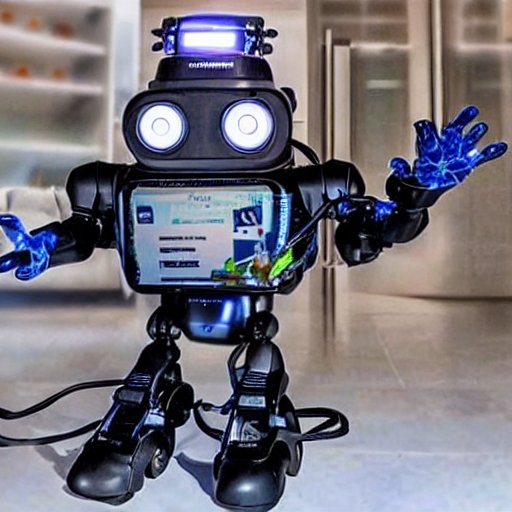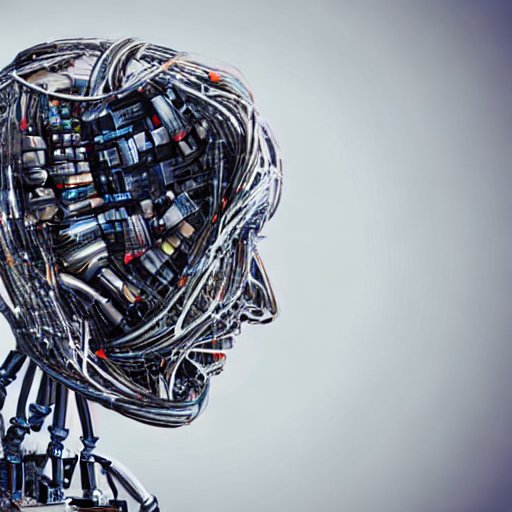Artificial Intelligence: What is it and how does it work?
With the popularization of the ChatGPT tool, the subject of artificial intelligence (AI) gained visibility worldwide. People from all corners were excited about the technology in the form of a chat that answers complex questions, creates texts in a few seconds and achieves a satisfactory score when answering questions on exams in Medicine and Law.
However, if on the one hand some people liked these new features and are even making money with ChatGPT, on the other hand, criticism of the technology also arose, as artificial intelligence is still limited. To exemplify some of these limits, the texts produced by this tool often lack depth and contain errors in their information.
In this article you will understand once and for all what artificial intelligence is, how it works and the risks it brings.
What is artificial intelligence?
Artificial intelligence is a field in the area of computer science where algorithms are developed capable of performing tasks where, in principle, the application of human intelligence would be necessary.
In summary, we can define that artificial intelligence is the capacity that machines have to learn, reason, understand and communicate autonomously, without the intervention of a human being in its results.
With the ability to learn from information collected in databases, AI systems can be trained to perform complex tasks and make precise decisions, managing in some cases to have an intellectual performance similar to that of a human being.
However, despite all the advancement and disruption of this new technology, artificial intelligence is still not able to completely replace human intelligence.
Where is artificial intelligence used?

Artificial intelligence has a wide application in many areas of human life. It can be used anywhere or on any device, according to the user’s needs. In the professional environment, for example, it can be used to improve the efficiency and productivity of tasks, optimizing the time needed to carry them out.
When used in healthcare, these systems can be used to improve diagnoses. In addition, AI can help in the development of new drugs and in the operation of equipment even during surgeries.
In the field of education, this technology would be capable, at least in theory, of creating educational content for distance learning classes, using texts, images and artificially generated narrations.
But not only that. See below the several other possibilities of applications for this technology:
- Transport: the use of AI to drive cars autonomously is already a reality. The technology can also be used for improvements in the logistics and management of public roads;
- Marketing: in addition to detecting trends in customs and human behavior, artificial intelligence can create advertising campaigns and automate publicity processes;
- Finance: in this segment, artificial intelligence can help detect fraud, analyze risk in financial assets and forecast market trends;
- Agriculture: AIs can monitor and predict the weather in food growing areas and also help with the automation of planting and harvesting processes;
- Industry: the technology can be used in the automation of manufacturing processes, in addition to being able to control the logistics and inventory management of factories;
- Commerce: artificial intelligence can improve the customer experience by recommending products or providing personalized assistance through chatbots.
As you may have noticed, AI can be used in a variety of ways. Even Google uses artificial intelligence in many of its products and services. The company’s search engine, for example, uses machine learning algorithms to provide relevant search results based on browsing history and other user data.
What are the types of AI?
Now that you have a general understanding of artificial intelligence, let’s give you some examples of the types of AI that exist, and you’ll see that they go far beyond ChatGPT.
- Expert systems: this approach uses rules of logic to make decisions;
- Machine learning: AI systems that learn from data rather than being programmed with specific rules;
- Artificial neural networks: neural networks are composed of layers of interconnected artificial neurons that can learn from data;
- Natural Language Processing: Enables systems to understand and process human language, including speech and writing.
- Hybrid artificial intelligence: combines different AI techniques to create systems that can handle more complex and diverse problems.
How does AI work?

Imagine that you have a common door in your room, but you want it to be different, for example, that it opens automatically when you arrive and closes when you leave for work, without having to program it. It would be great if the door could also block unauthorized people from entering even if they have the key.
The big problem is that you don’t know how to do all this. So he decides to seek out a computer scientist to help him add that intelligence to his front door. For this, the scientist needs to collect some data from his home, such as which people the door must recognize as trustworthy to open it, what time you go out to do your chores and what time you usually return.
Based on this data, the scientist will create a machine learning model that automates his door, recognizing the collected information and making decisions based on that recognition.
After a lot of trial and error, with the model being improved over time, the port will start to respond well to the process and you will have the expected result.
- Also read: ChatGPT: How to use it?
The problems and risks of artificial intelligence
Although it is programmed to get closer and closer to human reasoning, an artificial intelligence cannot imitate the characteristic that makes us unique: human emotions.
For this reason, it can be very useful to help solve problems that depend only on reason, but it can be a bad choice to solve problems that do not depend on a logical bias.
In addition, there is concern that AI could wipe out professions that are now considered very important to society. This concern is justifiably greater for certain professional segments such as journalism, advertising, marketing, among others.
While there really is this risk of extinction of sectors and job vacancies, artificial intelligence can also create new jobs with different responsibilities than those we currently have.
Another point is that, as artificial intelligence has the ability to make decisions autonomously, without human intervention, if poorly designed, these systems can make harmful decisions or with unforeseen consequences. In this sense, it is very important that artificial intelligence be programmed with due care so that its behavior is aligned with ours.
Conclusion
Having all this knowledge, we can say that artificial intelligence can become even more efficient in the coming months and years, remaining at the forefront of new technologies.
As it is still in the development phase, the more people use it and the more feedback the AIs receive, the faster they will develop. Thus, being able to help us even more in professional and day-to-day tasks.





